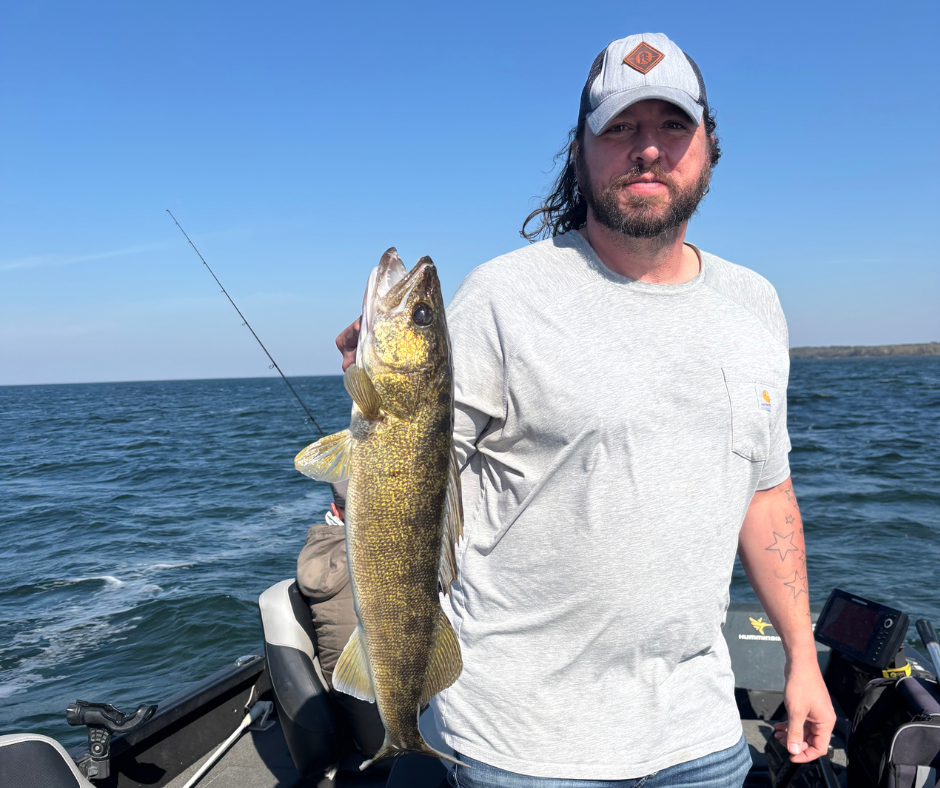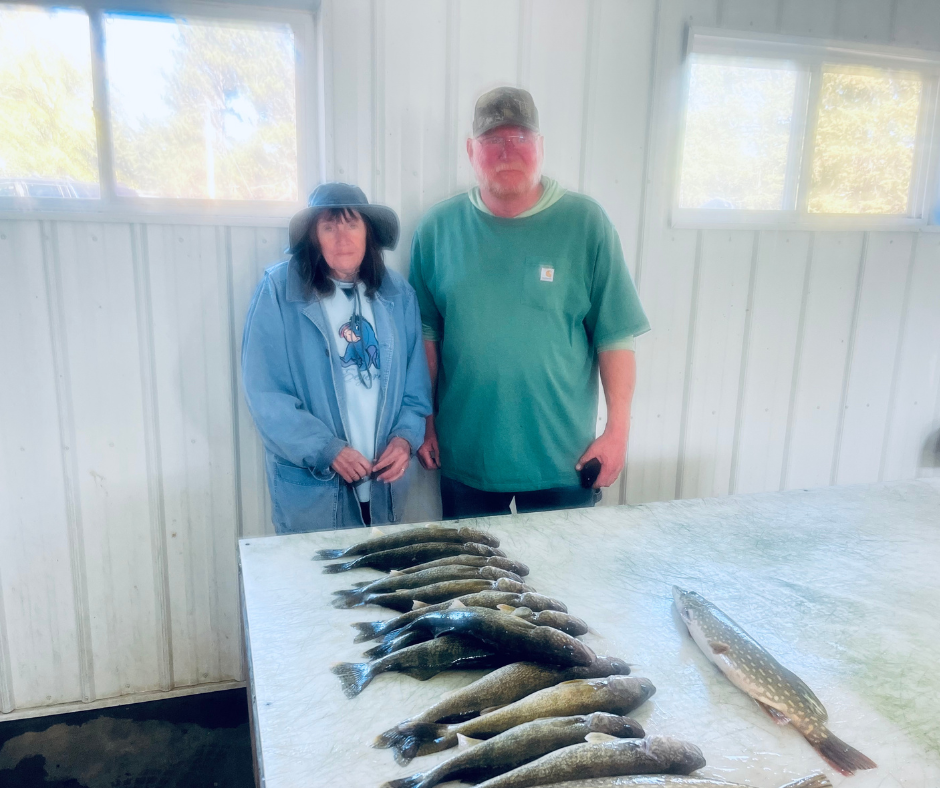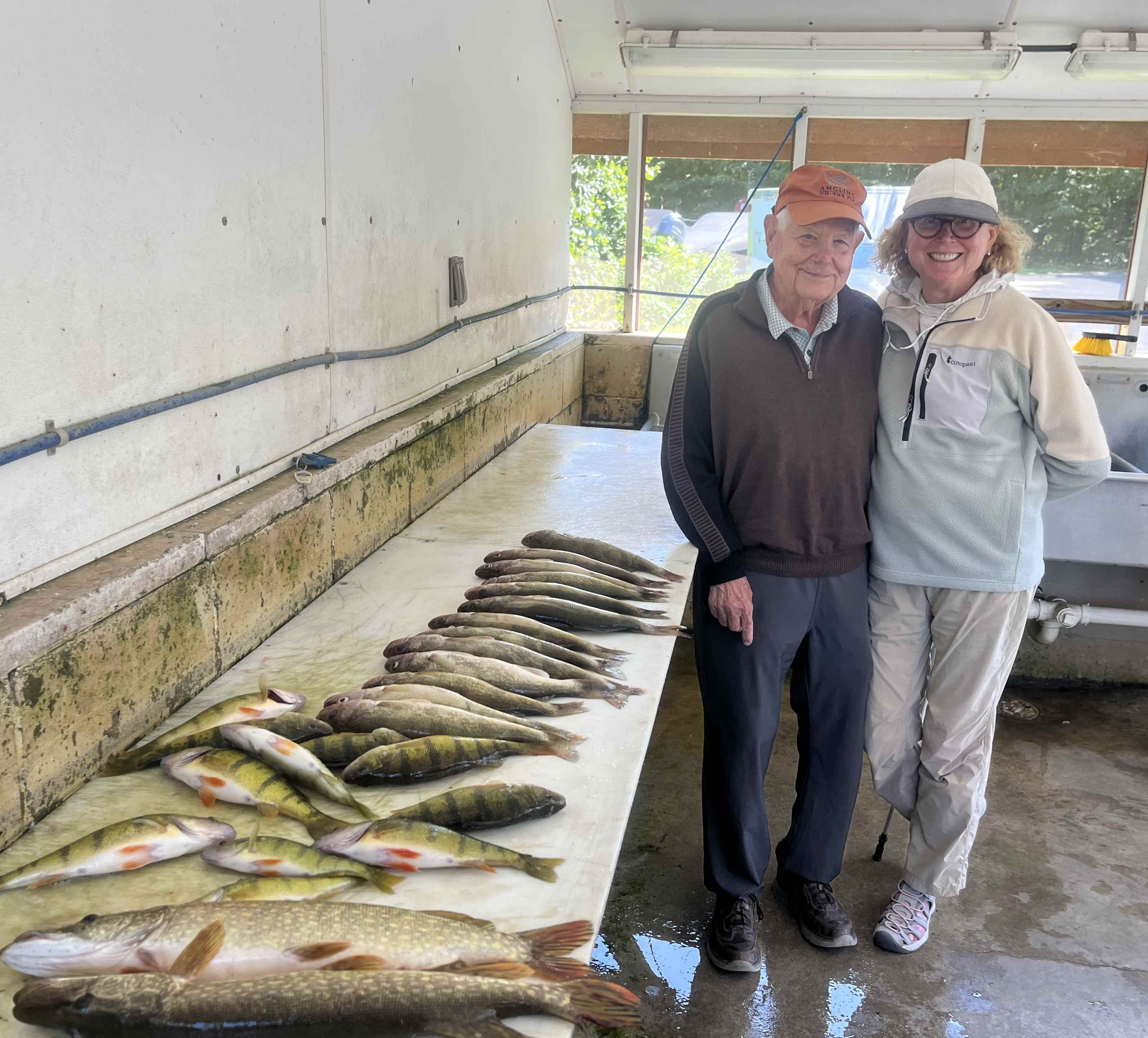Walleye Stripping

Since the early 1920’s the DNR has collected walleye eggs at the narrows between Little Cut Foot Sioux and Cut Foot Sioux lakes. The process involves placing a net across the channel and capturing fish as they move upstream to find spawning areas. Although many species are caught in the net, walleye are of primary importance.
During the spawning operation the trap is emptied each day. The trap is crowded to one corner and sorted. Male walleye are transferred to a separate net. Female walleye are identified as either being green, ripe or spent. While the fish show no external characteristics of being male or female it is easy to tell when the fish are spawning.
Workers turn the fish belly up and apply light pressure near the vent. If a white milky substance comes out that is the sperm and it is a male. If eggs flow freely it is a ripe female, if a clear liquid comes out it is a female that has already dropped her eggs and she is spent, if nothing comes out it is a female not ready to drop her eggs yet and the fish is green. Spent fish and any non-walleye are immediately released back to the water.
Green females are transferred to another net to be checked the following day, ripe females are spawned or stripped immediately. The eggs are stripped by cradling the fish while holding the tail with one hand, the other hand is moved along the belly with light pressure from behind the head towards the tail. The eggs are stripped into a dry pan, when the bottom of the pan is covered with eggs the sperm is added to another pan with water and then immediately poured over the eggs. Sperm from two to three more males is added over the next 2 minutes.
Speed is essential to insure a high fertilization rate. Once in contact with water the eggs begin to swell and will accept sperm for only about two minutes. The sperm is viable for only about 15 seconds in the water. The pan is kept in motion to ensure mixing of the sperm and eggs and to prevent clumping. The eggs have a natural adhesiveness so that they will stick to rocks or gravel during the incubation period. In the hatchery we don’t want clumping so we add mud to coat the eggs and remove the stickiness.
After the eggs are fertilized and coated with the mud they are washed and placed in coolers with fresh water constantly flowing through. After about two hours the eggs have swelled enough to be safely moved to the hatchery. Once at the hatchery, the eggs are measured and placed in hatching jars. Some eggs are transferred to other DNR hatcheries located throughout the state.
In the hatchery, water temperatures are closely controlled and the eggs hatch into fry in about three weeks. Most of the fry are stocked directly into area lakes according to an individual Fisheries Lake Management Plan. Some fry are stocked in shallow rearing ponds where they grow to fingerling size. These fingerling walleye are harvested in the fall and stocked into other lakes.
In a typical year the stripping operation will last seven to ten days, almost 30,000 walleyes will be handled, and over 120,000,000 eggs will be collected. This can be highly variable depending on the spring weather conditions, the fish population and statewide needs. The last several years, the run has been very strong and enough eggs have been collected in as little as four days. The ratio of males to females is usually about 2.5:1 because males mature at an earlier age and tend to hang around the spawning grounds longer. Of all the female walleye handled, eggs are collected from only about one third of the fish. Egg size is about 120,000 per quart and the average female stripped will yield about 0.4 quarts (about 50,000 eggs).
You can learn more about the Cut Foot Sioux walleye spawning site here.






